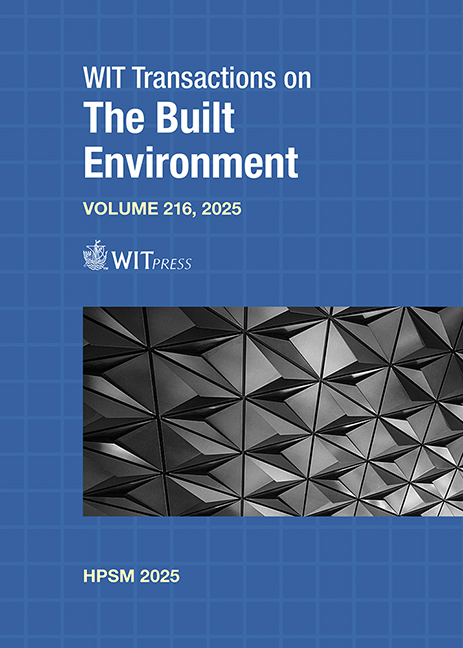HIGH AND LOW CYCLE FATIGUE OF A 6060 ALUMINIUM ALLOY
Price
Free (open access)
Transaction
Volume
216
Pages
13
Page Range
37 - 49
Published
2025
Paper DOI
10.2495/HPSM250041
Copyright
Author(s)
LORENZO PAGLIARI, RICCARDO GEROSA, DAVIDE PANZERI, FRANCO CONCLI
Abstract
Lightweight alloys are gaining significant interest in light of their high strength-to-weight ratio, which paves the way to more efficient systems with a direct impact on pollutant emissions, sustainability and carbon footprint. The results of a High- (HCF) and Low-Cycle-Fatigue (LCF) characterization testing campaign performed on a 6060-Aluminium alloy are presented. The 6XXX-series aluminium alloys features Magnesium and Silicon. These alloying elements form Magnesium Silicide (Mg2Si) as strengthening phase. The two predominant components must maintain perfect proportions to create the Al-Mg-Si system. 6XXX-series alloys are most frequently used for extrusion, as they provide a good balance of strength, corrosion resistance, weldability, machinability, and surface finish. Understanding the exact mechanical behaviour is crucial for its large-scale adoption. A series of cylindrical samples, manufactured with traditional techniques, was used to determine the High-Cycle-Fatigue properties of the 6060-alloy exploiting the statistical approach proposed by Dixon. The maximum number of cycles (run-out) was set to 5000000. The finite-life range was also studied by means of additional tests at higher stress levels. Regarding the LCF, tests were carried out with a strain-ratio equal to -1. The fatigue data were studied by means of the Coffin-Manson-equation and the cyclic and static behaviours were compared. The 6XXX-Aluminum series do not normally exhibit elastic unstable fracture. These alloys are so tough that fracture toughness is rarely a design criterion. However, the present set of HCF samples exhibited intergranular fracture. This phenomenon occurs when cracks propagate along the grain boundaries when these are weakened, typically due to adverse environmental conditions or sensitization phenomena. In light of this evidence, the results were compared with data from literature. While the mechanical properties remain within the typical ranges, they are very low. Further analyses have been conducted to explain such poor mechanical behaviour, through the very unusual fracture mode that was observed.
Keywords
aluminium, high-cycle-fatigue, low-cycle-fatigue, intergranular fracture





